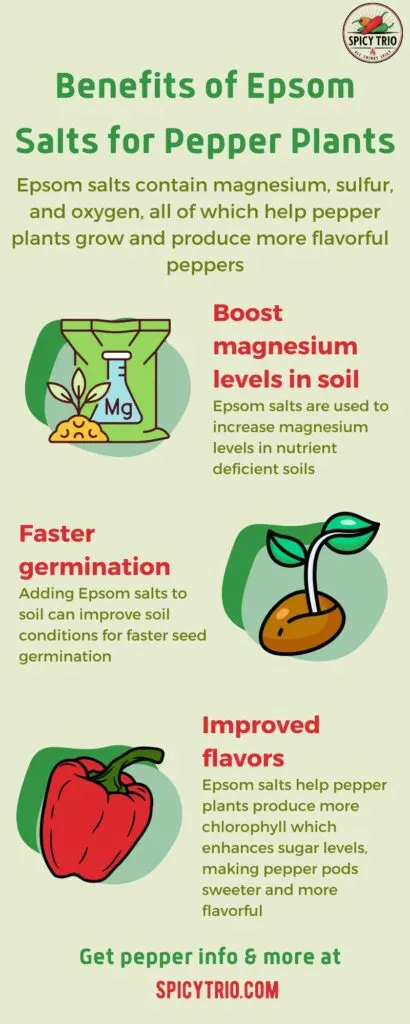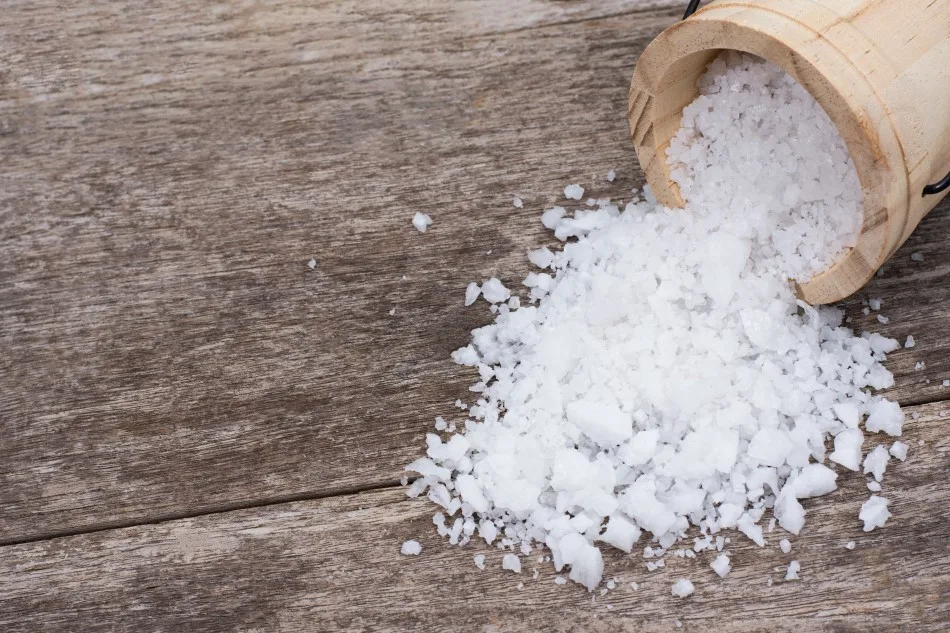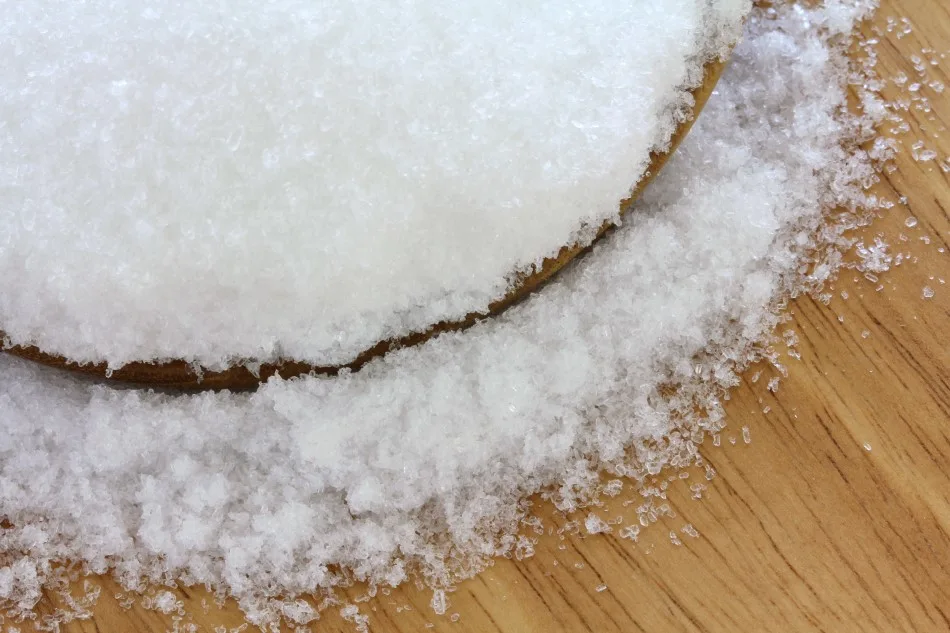Gardening can be a great way to get in touch with nature and grow some fantastic-tasting fruits and vegetables at the same time. Peppers are becoming very popular to grow, but you may not know that there are some additives you can make use of to boost the growth, health, and yield of your pepper plants. How does Epsom salt fare as one of these additives?
Pepper plants like Epsom salts because they boost growth and yield, especially in those plants that don’t receive enough magnesium. Magnesium and sulfur are key components that help the plant stay bushy, minimize wilting and blossom-end rot, and boost the yield and taste of the pepper.
This article will take a closer look at what benefits Epsom salts provide to pepper plants, as well as their included nutrients and a how-to guide on adding them to your pepper plants.

Do Pepper Plants Like Epsom Salts?
Epsom salts were first discovered in the 17th century in a town called Epsom in Surrey, England. A British physiologist named Nehemiah Grew was the first to document what he called ‘bitter purging salts’ bubbling out of a well in Epsom. From then on, the salts have been a dependable gardening nutrient, thanks to their beneficial properties with people and plants alike.
Epsom salts’ beneficial properties to plants became quickly apparent, especially in crops that would often die due to magnesium deficiency.
What Nutrients are in Epsom Salts?
Epsom salts are a natural mineral compound called magnesium sulfate, meaning it contains both magnesium and sulfur in high concentrations. About 10 percent of the compound is magnesium and 13 percent sulfur. These nutrients have very beneficial properties to pepper plants during various stages, the exact effects of which vary depending on the plant’s stage of development.
Magnesium Deficiency in Pepper Plants
If a pepper plant does not get enough magnesium, it can start to develop noticeable growth issues. Some of these symptoms are:
- Wilting or yellowing leaves
- Leaf curling and shriveling
- Low yield
- Muted taste in the peppers grown
- Slow or late growth
If you notice one or more of these symptoms in your pepper plants, magnesium deficiency may be at work. Adding Epsom salt via one of the methods detailed below can help remedy the situation.

Benefits of Epsom Salts for Pepper Plants
Epsom salts have many benefits for pepper plants, but the exact benefits change depending on how developed your plant is. Regardless, you can add Epsom salt to your pepper plant at any stage to see improvements in different aspects of the plant.
During the germination stage, Epsom salts can be added to boost the magnesium levels of the soil. Depending on the soil used, magnesium levels may not be high enough to satisfy your pepper plant’s needs, which is where Epsom salt can come in. Sulfur is also a crucial chemical needed by the plant to produce vitamins, amino acids, enzymes, and so on.
Early use of Epsom salts aids the plant in faster germination, early cell and root development, and photosynthesis. Epsom salts can also prevent blossom-end rot later in the peppers’ life cycle by strengthening the cell walls during pepper growth.
During the later stages of life, Epsom salts can be added to keep the plant bushy and lively, as well as to increase your potential yield. Magnesium helps boost chlorophyll production, which is why Epsom salt helps plants become bushy and green.
Did You Know? Chlorophyll also increases the sugar production in pepper plants. This results in sweeter more delicious peppers!
Even if they don’t use it early on, many gardeners add Epsom salt to pepper and tomato plants alike to increase plant yield.
How Much Epsom Salt to Add to Pepper Plants
Depending on your method of enriching the plant, the amount of Epsom salt needed will vary greatly—however, generally, you should not exceed more than a tablespoon or two of Epsom salts, depending on how many plants you have.

How to Add Epsom Salt to Pepper Plants: A Step-by-Step Guide
During the early stages of development, you may add a tablespoon (17 grams) of Epsom salts to the soil under your plant’s root system to aid in its development. After the roots develop further, they can absorb the mineral, which becomes dispersed throughout the soil, thanks to moisture. Epsom salt is very soluble, which is a big reason it’s so popular. A side benefit is that it doesn’t build up in the soil, either.
Another method is to create a foliar spray to use when blooms begin to appear on your pepper plant. You can do this by adding two tablespoons (28 grams) of Epsom salt to a gallon (3.79 liters) of water, and you can add this mixture to a spray bottle for maximum dispersal. Spray this on your plants once a month as a substitute for a single normal watering.
Side dressing is an easy and effective method to get nutrients to your pepper plant, and the high solubility of Epsom salts makes it especially effective. For every foot your plant has grown, you can add a tablespoon (17 grams) of Epsom salt to the soil. Epsom salt sinks into the soil via the soil’s moisture, which is a very efficient method of getting nutrients to your pepper plant.
As an additive before planting, add a tablespoon (17 grams) of Epsom salt to each planting hole before germination. This will create a soil environment that is rich in magnesium and sulfur, key ingredients for a developing pepper plant.
Epsom Salt and your Soil’s pH Levels
If your plant’s soil is too acidic, this can prevent the uptake of magnesium and other compounds key to your pepper plant’s growth and continued health. Epsom salt itself is nearly pH neutral, meaning it isn’t too alkaline or acidic. To its credit, Epsom salt will have nearly no effect on the pH of your soil, unlike other soil additives out there.
Normally, additives with sulfates are acidic and impact your soil’s pH, often to the plant’s detriment. While peppers can be grown in soil with a pH from 6 to 7, which is slightly acidic, you don’t want to add anything that can lower the pH even further and harm your pepper plant’s development.
Can Too Much Epsom Salt Damage Your Pepper Plants?
As with any chemical additive, you can add too much and harm your plant. Too much magnesium can prevent the plant from absorbing other essential nutrients, like calcium ion. Calcium deficiency in pepper plants can lead to blossom-end rot, but this shouldn’t occur as long as you don’t use more than recommended.
If you use a foliar spray with Epsom salt, using it more often than recommended can cause your pepper plant’s leaves to burn easily in the sun. Additionally, too much magnesium can negatively affect the plant’s cell walls which can lead to wilting and you plant dying.
If you suspect your plant has suffered from an overdose of magnesium due to Epsom salts, you can flush the plant to help get rid of excess magnesium.
To do this, add about ten times the volume of water as there is soil. If the plants are in the ground, you can simply soak the soil to flush it. Usually, too much water is problematic on its own, but a magnesium overdose in your plant is a much more immediate problem that a one-time flush can help resolve, without causing too much additional damage to the plant.
Where Can I Buy Epsom Salts?
Epsom salts are readily available in virtually any drug store or grocery store and at a very cheap cost compared to some of the more high-end soil additives out there.
Final Thoughts
Epsom salts can add much-needed magnesium and sulfur to your pepper plant’s diet, providing an array of long-term benefits. As long as you’re careful not to add too much, this simple and cheap compound can boost the health and yield of your pepper plants. Not to mention, they make your harvested peppers taste much better!
Here are Some of my Favorite Gardening Products and Tools
Thank you for reading this article. I hope you found it helpful for growing some new plants in your home or garden. Here are some products I like that I hope you’ll also find helpful. These are affiliate links, and I am compensated for referring traffic. But in all honesty, these are the exact product that I use or recommend to everyone.
Soil: For high-quality soil, I really like Fox Farm Ocean Forest. I do all my growing in containers and this soil has worked great for me. I like how they use nutrient-rich contents like earthworm castings, bat guano, and composted crab and fish.
Fertilizer: Currently I am using a seaweed-based organic fertilizer call Neptunes Harvest. This is a great milder fertilizer option if you want to use something organic. If you want a more powerful fertilizer, I recommend Fox Farm Liquid Nutrient Trio, lots of people have had great growing success with this product.
Pruning Shears: Pruning shears are one of the most useful gardening tools to have because it’s important to prune your plants to keep them healthy. The pruning shears I recommend are the Gonicc 8’’ pruning shears. I like them because they are built sturdy and work both on bigger and smaller plants, so you don’t need to have multiple pruning shears.
spicytrio.com is a participant in the Amazon Services LLC Associates Program, an affiliate advertising program designed to provide a means for sites to earn advertising fees by advertising and linking to Amazon.com. spicytrio.com also participates in affiliate programs with other sites. spicytrio.com is compensated for referring traffic and business to these companies.
